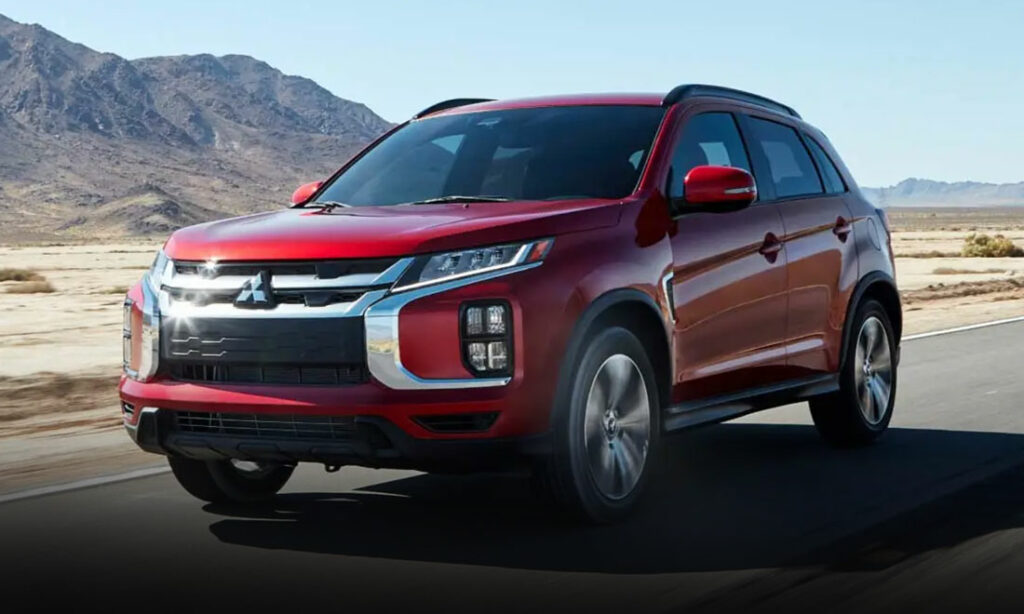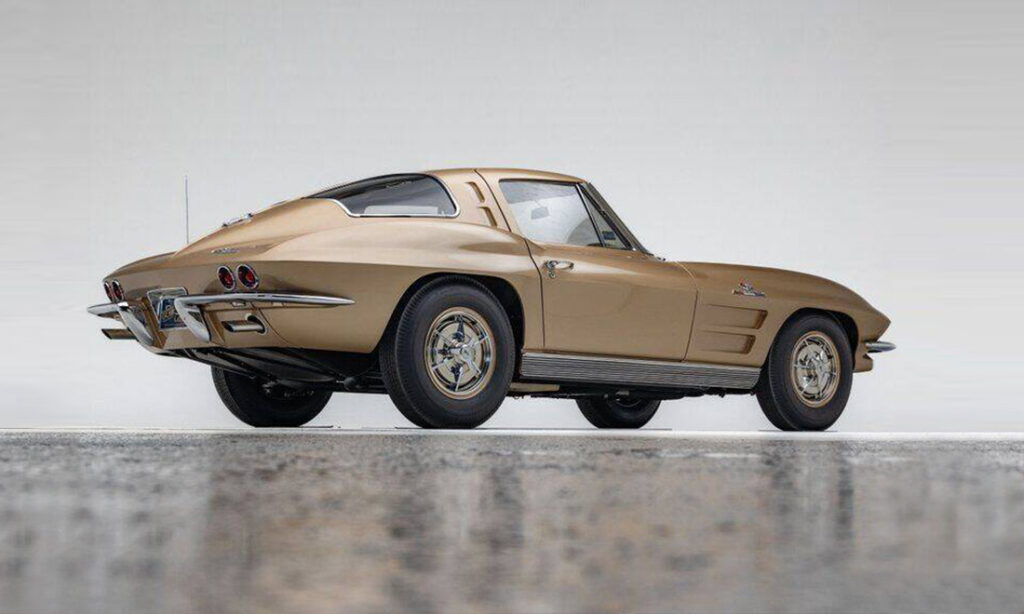Retro Review: Pontiac Chieftain
This classic ‘50s Pontiac features loads of chrome, curves, and one of the coolest hood ornaments of all time.
The Chief of Fifties Flare
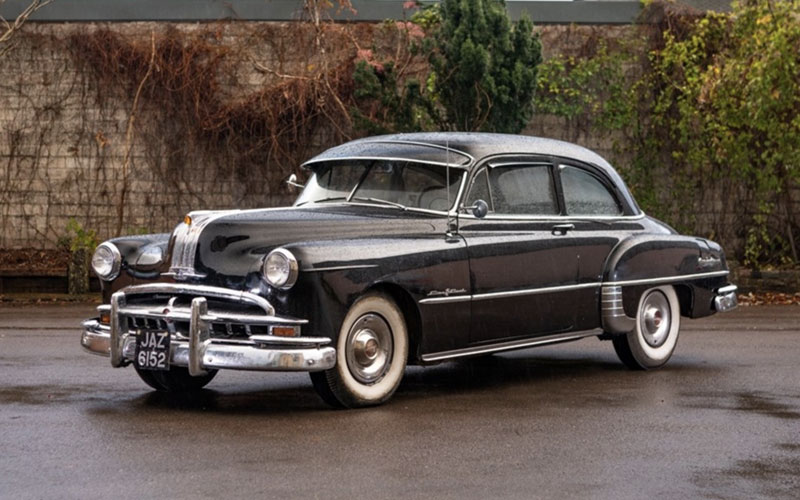
1949 Pontiac Chieftain – classicdriver.com | Shop Pontiac Chieftain on Carsforsale.com
Pontiac has a reputation as “that other GM brand” floating off somewhere in the periphery, doing mid-market things. As such, we can sometimes forget the cool and unique cars the brand produced over the decades. Turning the clock back the 1950s and it’s easy to find charismatic classics like the Pontiac Chieftain. Typical of the era, the Chieftain was heavy on chrome and curves, but what distinguishes the Chieftain from other cars of the time was its increasingly old-fashioned straight-eight and one of best hood ornaments of all time.
First Generation Pontiac Chieftain – 1949-54
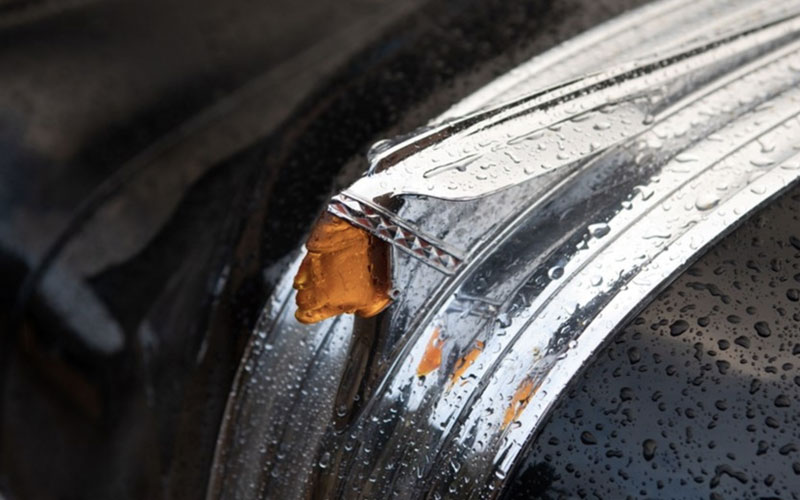
The Pontiac Chieftain debuted in 1949, succeeding the Pontiac Torpedo. Along with Streamliner, the Chieftain was Pontiac’s first post-WWII design. The Chieftain was offered as a coupe, sedan, convertible, or 2-door hardtop. Two engines were offered for that first year, a 239 cu in straight-six making 90 or 93 horsepower, depending the compression ratio, or a 248 cu in straight-eight with 103 or 106 horsepower, again, varying based on compression ratio. The higher output versions of each engine were paired with the Hydra-Matic automatic transmission.
The beguiling design of the car is credited to Herman Kaiser and estimable Harley Earl. The Chieftain’s design begins with its heavy chrome front bumper and chrome accenting that included a front to back trim line along the side, the signature “Silver Streak” of the eight-cylinder versions ran down the center of the hood. There was even chrome accenting along the fuel door (a persistent detail that remained even as the rest of the car’s design evolved). The Chieftain featured be-chromed bulging rear fenders, a split windshield with built-in sun visor, and a nifty center speaker located in the middle of the dash with a clock at its center.
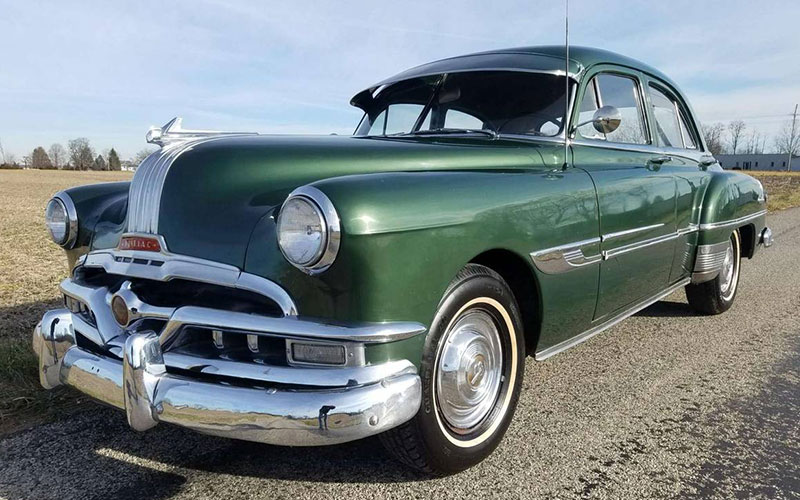
But most notable of all the Chieftain’s details was its Indian head hood ornament, with the stereotypic visage of a regally stoic Native American chief. The Catalina trim would add a light to this element for even more pop, making this one of the most visually compelling hood ornaments since Rolls-Royce’s Spirit of Ectasy.
The Chieftain evolved within its first generation. In 1952, output in both the straight-six and straight-eight improved by 10 and 15 horsepower respectively, and a station wagon was added that included real wood paneling. Exterior revisions arrive in ’53 that included an additional two inches to the wheelbase, the windshield no longer split, and new rear fins. 1954 saw new amenities like power windows and air conditioning (the Chieftain was the first American car to feature a modern AC system that included dash controls).
Second Generation Pontiac Chieftain – 1955-57
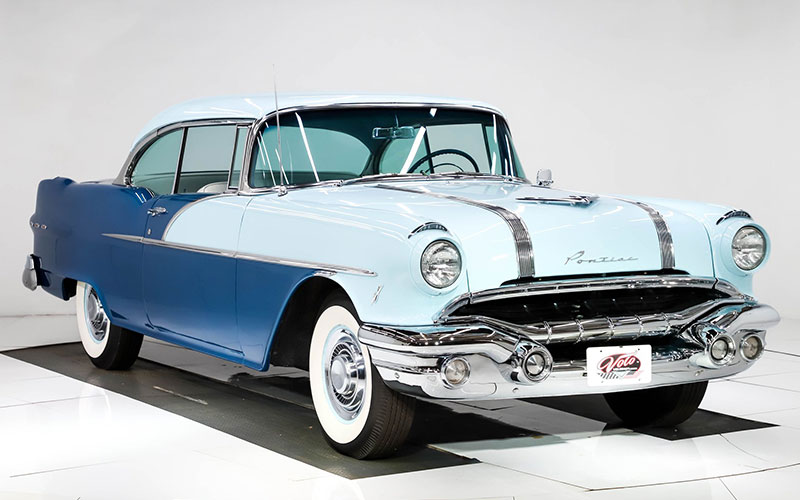
Though it was still on Pontiac’s A-body platform, the Chieftain changed up nearly everything for its second generation from the chassis to the body to the engine. Design updates gave the Chieftain a two-tone paint scheme, a new grille, and headlights that included chrome “eyebrows.” The hood’s Silver Streak was now split into two lines, and the hood itself flatter. Of course there was also a new hood ornament, larger this time and in the shape of an airplane with the chief’s head at the nose. The 1940s-esque art deco style fender bulges were eliminated as was the convertible version.
Even more significant was the new 287 cu in “Strato Streak” V8 under the hood. This engine upped output for the Chieftain to between 173 and 180 horsepower, again depending on the compression ratio.
Styling was again revised for the 1957 model year with bigger bumpers and a new white trim line along the body that flared at the rear quarter panel. The hood ornament was deleted, replaced by a Pontiac badge placed on the front fold of the hood and small chrome torpedoes above the headlights. A new V8 was also added, now a proper 347 cubic inches and making 290 horsepower.
Third Generation Pontiac Chieftain – 1958
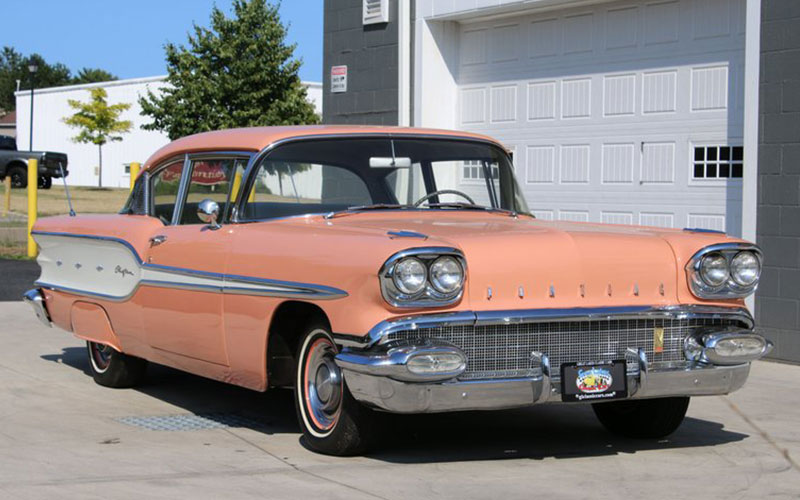
The Chieftain was reimagined once again for its third and final generation. Ported over to the GM B-body platform, the new Chieftain was offered as a sedan, hardtop, or wagon in both two- and four-door varieties. The convertible was again offered, with a total of 7,359 built for 1958. While the Chieftain never got back its hood ornament, it kept the chrome ornaments on each front fender as accenting to the new quad headlight design. The white arrow side trim was widened at the rear to take up most of the back quarter panel.
The Chieftain also benefitted from mechanical updates as well that included an air suspension, a limited slip differential, and a new 370 cu in V8 making 240 horsepower with the manual transmission and 270 horsepower with the automatic equipped.
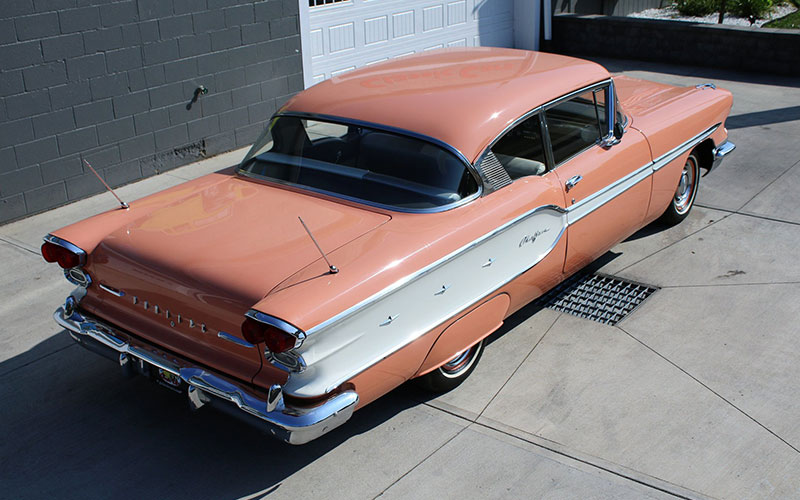
1949 Pontiac Chieftain – classicdriver.com | Shop Pontiac Chieftain on Carsforsale.com
The Chieftain’s run proved short as its very own Catalina trim was granted its own independent nameplate and thereby replacing the Chieftain itself for 1959. Though it may be overshadowed by more recognizable names like the GTO and Bonneville, the Pontiac Chieftain remains a beautiful car worth remembering today.


